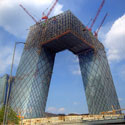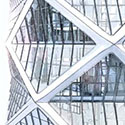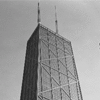Filter by
You must be a CTBUH Member to view this resource.
875 North Michigan Avenue
Big John, 175 East Delaware Place, John Hancock Center
Building
Completed, 1969
60611
residential / office
steel
343.7 m / 1,128 ft
100
717
50
9.2 m/s
260,126 m² / 2,799,973 ft²
You must be a CTBUH Member to view this resource.
You must be a CTBUH Member to view this resource.
Usually involved in the front end design, with a "typical" condition being that of a leadership role through either Schematic Design or Design Development, and then a monitoring role through the CD and CA phases.
The Design Engineer is usually involved in the front end design, typically taking the leadership role in the Schematic Design and Design Development, and then a monitoring role through the CD and CA phases.
Other Consultant refers to other organizations which provided significant consultation services for a building project (e.g. wind consultants, environmental consultants, fire and life safety consultants, etc).
Material Supplier refers to organizations which supplied significant systems/materials for a building project (e.g. elevator suppliers, facade suppliers, etc).
You must be a CTBUH Member to view this resource.
Usually involved in the front end design, with a "typical" condition being that of a leadership role through either Schematic Design or Design Development, and then a monitoring role through the CD and CA phases.
The Design Engineer is usually involved in the front end design, typically taking the leadership role in the Schematic Design and Design Development, and then a monitoring role through the CD and CA phases.
The main contractor is the supervisory contractor of all construction work on a project, management of sub-contractors and vendors, etc. May be referred to as "Construction Manager," however, for consistency CTBUH uses the term "Main Contractor" exclusively.
Other Consultant refers to other organizations which provided significant consultation services for a building project (e.g. wind consultants, environmental consultants, fire and life safety consultants, etc).
Material Supplier refers to organizations which supplied significant systems/materials for a building project (e.g. elevator suppliers, facade suppliers, etc).
In Their Own Words: The Story of the John Hancock Building
12 September 2019 - Event
CTBUH 50th Anniversary: Moments in History #3
28 March 2019 - Conference Activity

07 November 2013 | Chicago
Interview: Fazlur Khan Winner: Clyde Baker
Clyde N. Baker, Jr., Fazlur R. Khan Lifetime Achievement Medal Winner, discusses his lifetime work as a geotechnical engineer including working on 7 of the...

11 October 2019
Tall Buildings in Numbers: 50 Years of Tall Building Evolution
CTBUH Research
The default image of the skyscraper for the past 50 years in the public imagination has likely been the extruded, rectilinear corporate “box,” derived from...
Over forty years after completion, the 875 North Michigan Avenue has established itself as one of the world’s most recognized skyscrapers and an iconic example of late twentieth century Chicago design, construction, and engineering. The building’s structural, programmatic, and architectural innovations combine to create a design that is heralded for its elegant simplicity.
As one of the world’s first mixed-use tall building projects, the John Hancock Center design was influential in its internal organization. The complex programmatic design placed commercial space on a sub-level concourse and the first five levels. This was followed by levels of parking, office, residential, and finally dining, observation, and broadcasting facilities.
The architecture of the tower is informed by its expressive structural system and gently sloping façades. This innovative form was designed to efficiently accommodate the variety of uses contained in the building. The gentle inward slope creates optimally-sized floor plans for both the lower parking and office levels and the higher residential floors. Additionally, the tapered form significantly reduces wind loads, allowing for a reduction in the size of structural members. For Chicago’s busy streetscape, the building’s shape increases the visual verticality of the building; adding perceived height to an already impressively tall tower.
The architectural form of the 875 North Michigan Avenue represents a radical departure from established aesthetics of the time. Initially, critics labeled the building as too industrial, but over time it has come to symbolize the gutsy tradition of structural expression in Chicago. It is often characterized as super-rational, logical, and a representation of the machine age of architecture. It exhibits its true structure much in the tradition of bridge construction. These qualities are at the heart of why the building has endured in the minds of so many.

07 November 2013 | Chicago
Interview: Fazlur Khan Winner: Clyde Baker
Clyde N. Baker, Jr., Fazlur R. Khan Lifetime Achievement Medal Winner, discusses his lifetime work as a geotechnical engineer including working on 7 of the...

20 September 2012 | Chicago
Interview: Management of Tall Buildings
Tony Long of CBRE is interviewed by Jeff Herzer during the 2012 CTBUH Shanghai Congress at the Jin Mao, Shanghai. Tony talks about the management...

03 March 2008 | Chicago
Material-Saving Design Strategies for Tall Building Structures
Kyoung Sun Moon from the University of Illinois at Urbana-Champaign discussed stiffness-based design methodologies for tall building structures at the CTBUH 8th World Congress in...

11 October 2019
Tall Buildings in Numbers: 50 Years of Tall Building Evolution
The default image of the skyscraper for the past 50 years in the public imagination has likely been the extruded, rectilinear corporate “box,” derived from...

01 March 2018
The emergence of tall buildings in the late 19th century was possible by using new materials and separating the role of structures and that of...

01 December 2016
There is much architectural and engineering literature which discusses the virtues of exterior bracing and diagrid systems in regards to sustainability - two systems which...

01 December 2016
The Rational Optimization and Evolution of the Structural Diagonal Aesthetic in Supertall Towers
In the design of supertall towers, engineers often find the conventional frame systems used in countless buildings in the past decades incapable of providing the...

24 August 2015
World’s Highest Observation Decks
Perhaps no element of a tall building is more closely related to the pure pleasure of standing high in the sky and taking in the...

01 February 2000
Reflections on the Hancock Concept
This paper reviews the stages of conceptual design through the final design of the John Hancock Center in Chicago. Several unique features of the project...
12 September 2019
Members of the original architecture and engineering team behind Chicago’s John Hancock Center shared the story of the creation of one of the city’s best-known landmarks.
28 March 2019
"CTBUH 50th Anniversary: Moments in History #3" explores the impact that CTBUH Chairman Fazlur R. Khan, partner, Skidmore Owings & Merrill, had on the tall building industry.
22 January 2019
Check out our monthly predictions based on our industry intelligence to see what trends and milestones will shape the industry in the year to come!
13 October 2016
The Council is pleased to announce the Top Company Rankings for numerous disciplines as derived from the list of projects appearing in 100 of the World’s Tallest Buildings.
29 May 2015
A group of 20 Belgian real estate professionals traveled to Chicago from May 25-29 to visit several tall buildings, and related developments as part of a CTBUH Belgium study trip.
1 March 2011
Over forty years after its completion, the John Hancock Center has established itself as one of the world’s most recognized skyscrapers and an iconic example.
Subscribe below to receive periodic updates from CTBUH on the latest Tall Building and Urban news and CTBUH initiatives, including our monthly newsletter. Fields with a red asterisk (*) next to them are required.
View our privacy policy